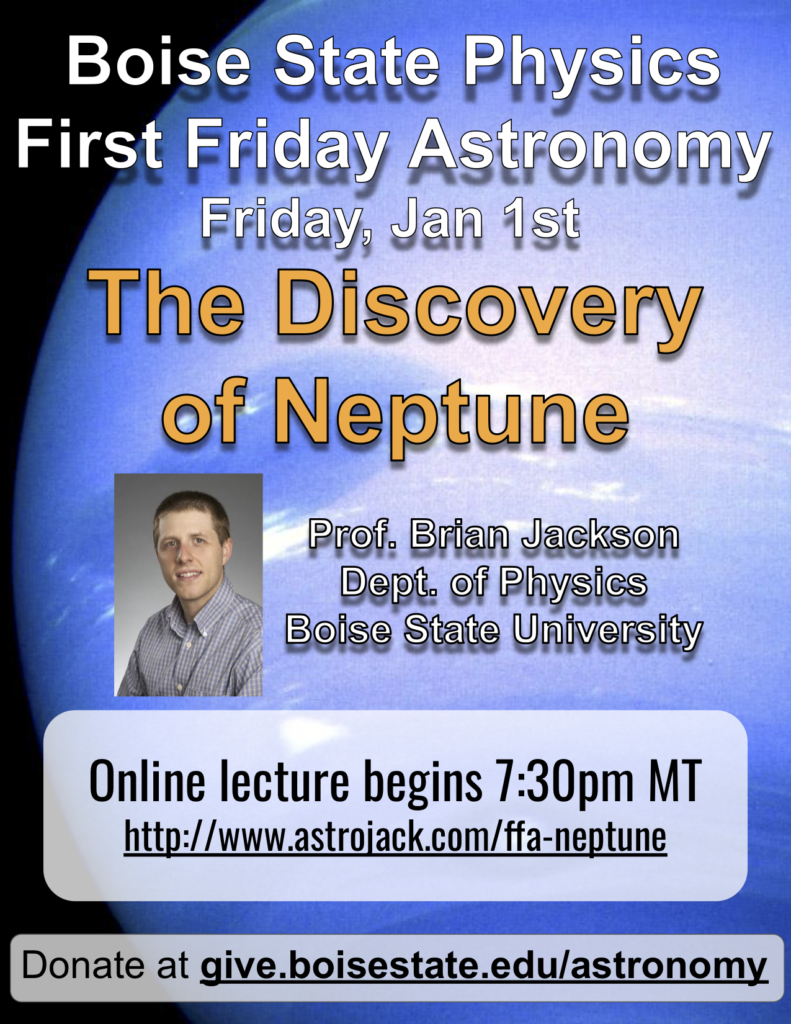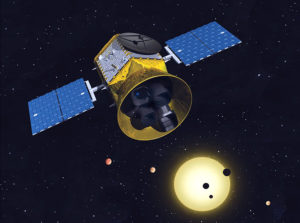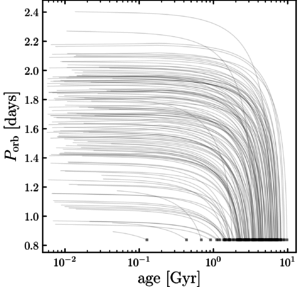White dwarf stars have been a mystery since they were first discovered. Extraordinarily hot and compact, the engima of white dwarfs was unraveled largely through the herculean efforts of the Harvard computers. Astronomers now know white dwarfs are the final stage of a violent aging process for Sun-like stars. And though astronomers originally expected such violence would spell doom for any planets in orbit, mounting discoveries show that some planets at least can survive this cataclysmic descent into stellar senescence. Whether any life survives on those planets is another matter.
Continue Readingexoplanets
All posts tagged exoplanets

When the first exoplanets were discovered, astronomers were shocked to find gas giants like Jupiter but zipping around their host stars in days rather than years. These hot Jupiters orbited so close that astronomers worried they might eventually spiral into their stars. Although no one has yet seen a planet disappear, mounting circumstantial evidence suggests perhaps 35% of stars actually do consume their planetary children.
Continue Reading

The TESS Spacecraft.
At our journal club last week, we discussed the discovery of a new warm Jupiter from the TESS Mission.
TESS is the successor to the wildly successful Kepler/K2 Mission and is designed to find exoplanets using the same technique as Kepler – looking for their shadows as planets pass in front of their host stars, i.e. the transit technique.
Sadly, the Kepler spacecraft was officially shut down two weeks ag0 because it ran out of fuel, but TESS, launched last March, is off and running, having already discovered about half a dozen new planets.
One of those planets, we discussed in journal club on Friday – a planet orbiting the star HD1397. The gas giant planet is about the same size as Jupiter but half the mass, making it significantly less dense than Saturn.
The planet also has an unusually eccentric or stretched-out orbit that swings very near its host star, passing to within 8 stellar radii from its star at its closest point. By contrast, the Earth is 200 stellar radii away from the Sun.
If this planet had been discovered 20 years ago, it would have completely stumped astrophysicists, and many would likely have doubted its existence. Nowadays, though, such strange planets are practically the norm in exoplanet astronomy.
So with HD1397 b’s discovery, the exoplanet train rumbles on, and we should expect thousands upon thousands more bizzarities from TESS that will, like Kepler’s discoveries, again re-write the planetary rulebook.
At our research group meeting, we also discussed the art of scientific presentations. I’ve pasted the example presentation I gave below.
At our research group meeting on Friday, we discussed an interesting paper from Dr. Tom Barclay and colleagues, which explored how many and what kinds of planets we might find with the TESS mission, launched in April this year.
As Barclay et al. argue, trying to estimate the planet yield from an upcoming survey provides several benefits. For instance, knowing how many planets TESS may find can help astronomers figure out how much time to allot for follow-up observations at large observatories. Also, thinking about TESS discoveries is like staying awake on Christmas eve, anticipating all the presents – it’s just plain exciting.
And make no mistake – TESS will be another game-changer. Kepler focused on figuring out how many of each kind of planet there is in our galaxy, but as one of the trade-offs to facilitate this kind of statistical study, most of the systems found by Kepler are much too far away and dim for us to conduct follow-up studies and learn more about the systems.
TESS takes a different tack, focusing on bright, nearby stars for which additional characterization of the planets will be easier. For instance, some of the planets discovered by TESS will be observed by NASA’s next behemoth, the James Webb Space Telescope, which will reveal the planets’ atmospheres in exquisite detail.
Barclay’s paper lets us shake the presents under the TESS tree, hinting at the goodies inside. By modeling a wide variety of planets in orbit around the 3+ million stars that TESS will see, they try to simulate the kinds of observations the mission will collect and figure out which planets TESS can find easily and which ones it will struggle with.
For example, they find TESS may discover nearly 300 planets with radii smaller than twice the Earth’s. Among these potentially Earth-like planets, roughly ten will orbit in the temperate zone, making them possible oases for extraterrestrial life.
After reading these results about potentially habitable planets, I was also excited about their prediction that TESS may find 12,000+ giant (i.e. Jupiter-sized) planets. Barclay et al. caution that these objects will be especially hard to distinguish from astrophysical false positives. But these planets may also reveal some of the most interesting astrophysical phenomena, so if there are any clever tricks to extricate these planets, the effort might prove worthwhile.

A pine grove on Puget Sound’s campus.
Just recently returned from the meeting of the Northwestern Section of the American Physical Society, which took place on the lovely campus of the University of Puget Sound.
It was a cozy meeting of physicists and student physicists from throughout the northwest, and there was a variety of talks and posters on topics from gravitational waves to DNA computers to diversity in science.
One of the talks that really stuck out in my mind was the banquet presentation from Puget Sound’s Prof. James Evans about the antikythera mechanism, a mysterious barnacle-encrusted gearwork recovered from an ancient Grecian shipwreck.
Constructed by an unknown artisan in about 200 BC (according to Evans), the machine could track the date, follow lunar phases, predict solar eclipses, and even maybe show planetary motions — all with the turn of a single crank.
For my presentation, I gave a brief overview of exoplanet astronomy, with a focus on how these discoveries have begun to hone our ideas about alien life and extraterrestrial civilizations. I’ve posted by presentation below.
With the very first discovery of an exoplanet around a Sun-like star (51 Peg b), astronomers were introduced to hot Jupiters. These totally unexpected planets resemble Jupiter in mass, composition, and size, but they have orbits that nearly skim the surfaces of their host stars. Some of them are even losing their atmospheres under the apocalyptic glare of their host stars.
How their lives began remains a mystery, but we have a pretty good idea of how their lives will end – they will be engulfed or torn apart by their host stars. That’s because hot Jupiters are big and close enough that they can actually raise a tidal bulge on the stars (and we can actually see the bulge in a handful of cases).
This tidal interaction can cause the planets to spiral downward toward the stars, and at the same time, it causes the spins to spin faster until the planet is destroyed by the star. The same tidal effect, just in reverse, is driving the Moon away from the Earth, while slowing down the Earth’s spin. But here’s the key: we don’t know how quickly the planets are spiraling in.

Tidal decay of planetary orbital period over billions of years (Gyrs). From Penev et al. (2018 – https://arxiv.org/abs/1802.05269).
Enter Prof. Kaloyan Penev of UT Dallas Physics Dept. On Valentine’s Day last week, he and his colleagues published an academic love note exploring planetary tidal decay. To do this, they modeled the evolution of planetary orbits and stellar spins under the influence of tides. The tracks in the figure at left show how a planet’s orbital period (or distance from its star) might shrink over billions of years, thanks to tides. The clump of spaghetti noodles in the figure shows that evolution for a range of assumptions about the rate of decay.
By comparing the stellar spin rate and planetary orbit predicted by their model to those we actually observe for each system, Penev and colleagues showed that the tidal decay rates might actually slow down as the planets approach their stars. So perhaps instead of an reckless death dive into the star over a few million years, the planets make like Zeno’s tortoise and tiptoe closer and closer without plunging in.
Upcoming surveys such as the TESS mission and the Large Synoptic Survey Telescope may soon allow us to test whether planets do or do not plunge into their stars. Theoretically, we expect stars that eat their planetary children dramatically brighten up by a factor of 10,000 over a few days – faster than a supernova brightens but nowhere near as bright. These surveys might able to see stars engaged in this act of cosmic infanticide.